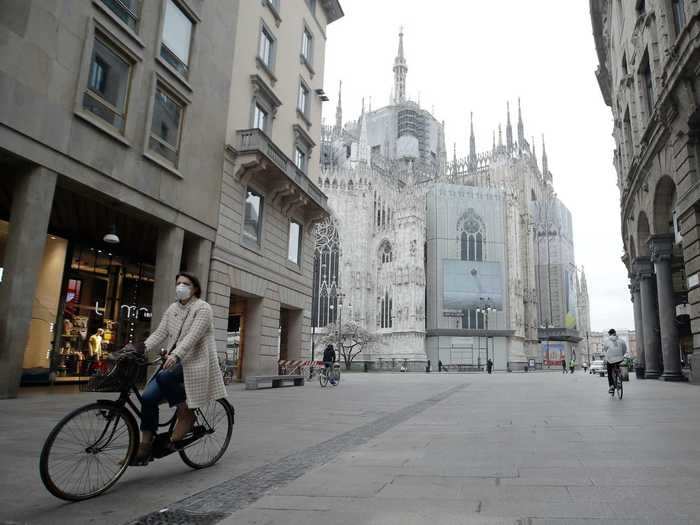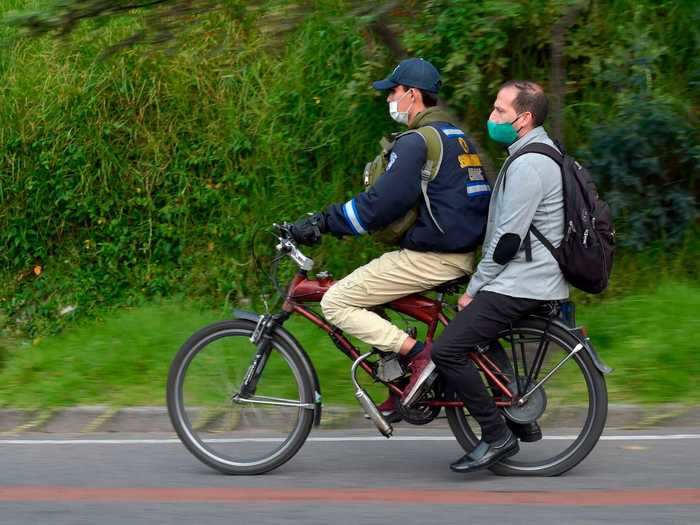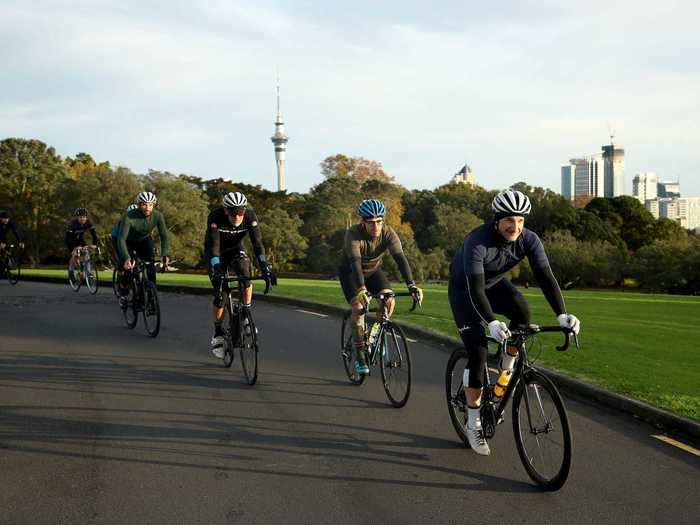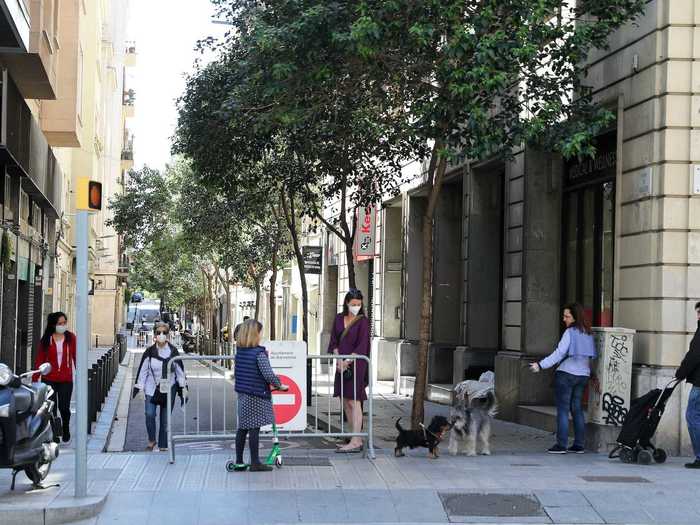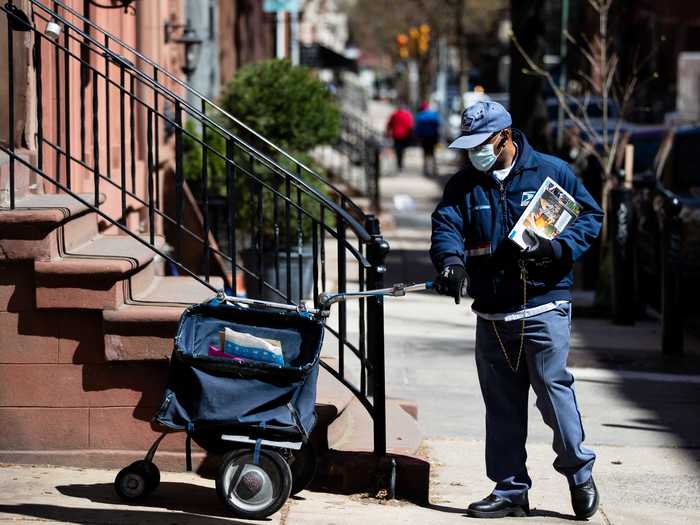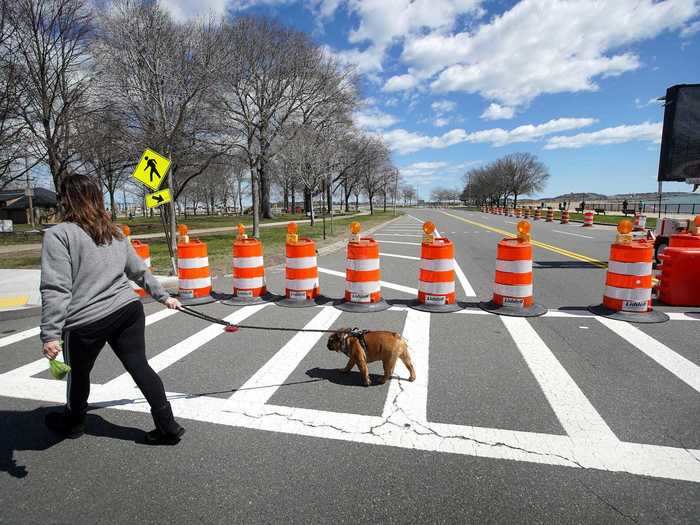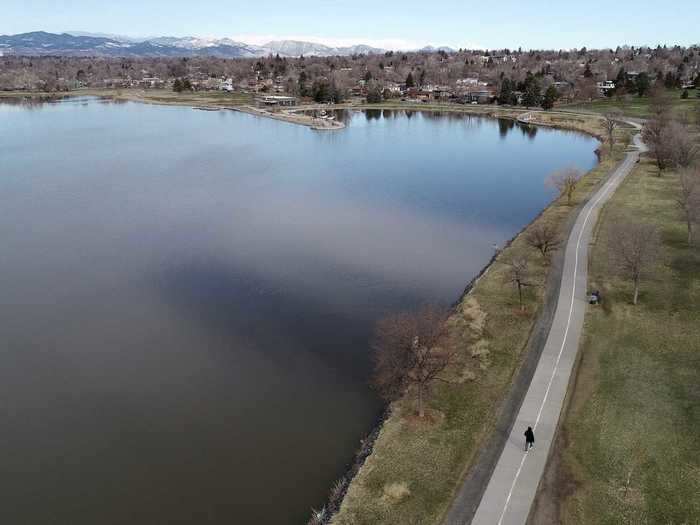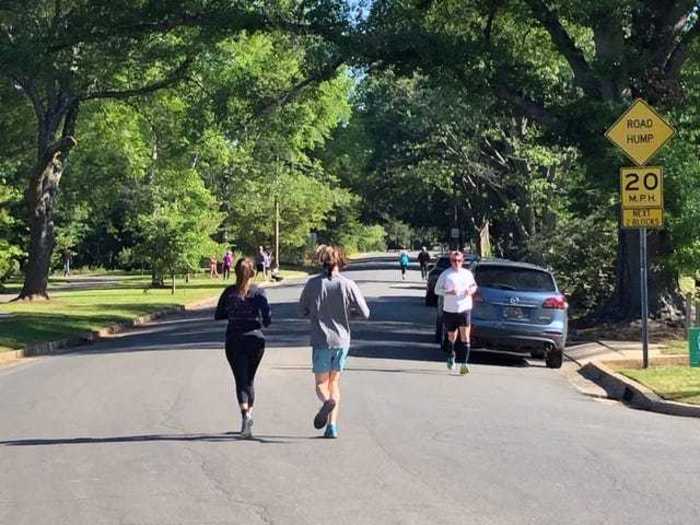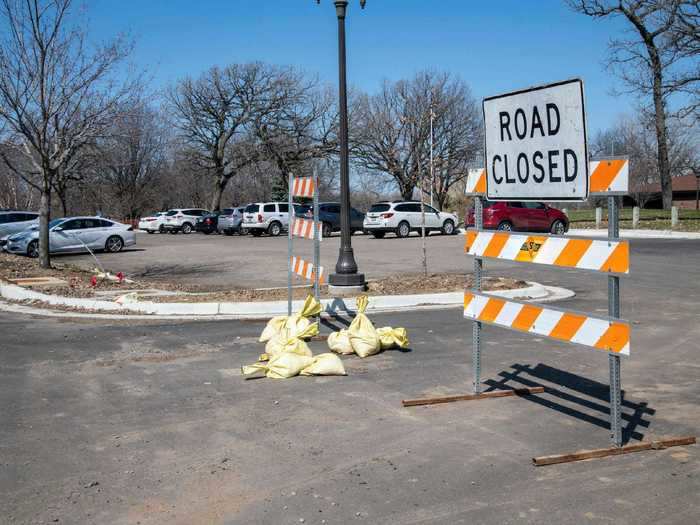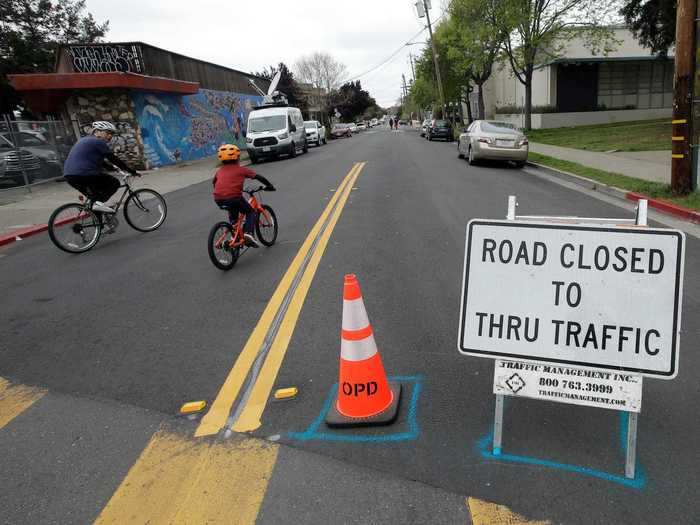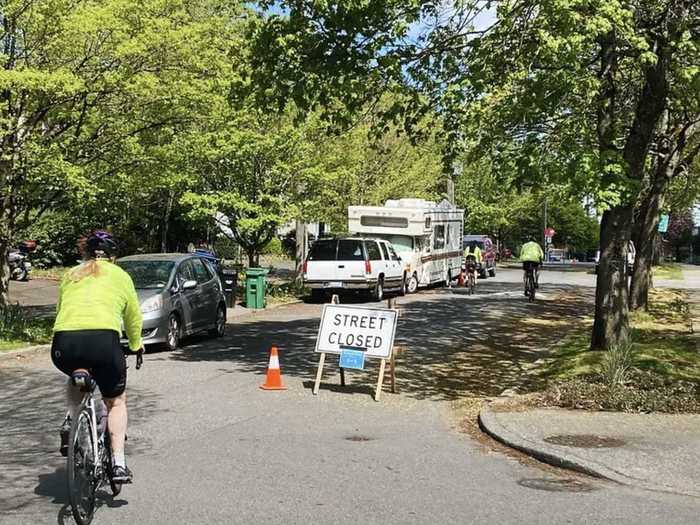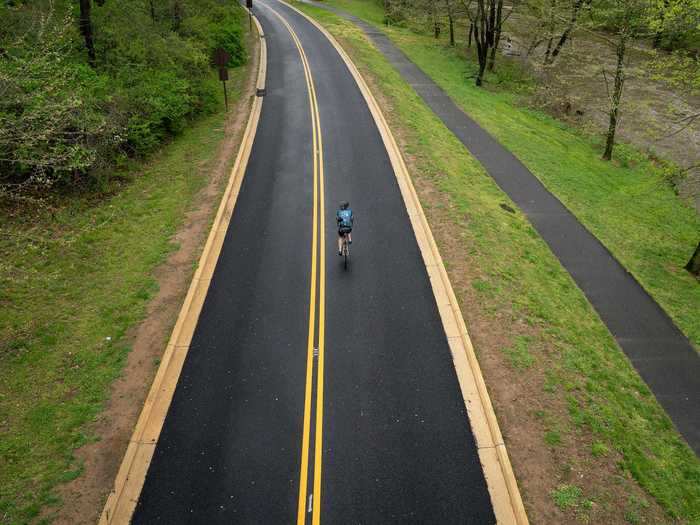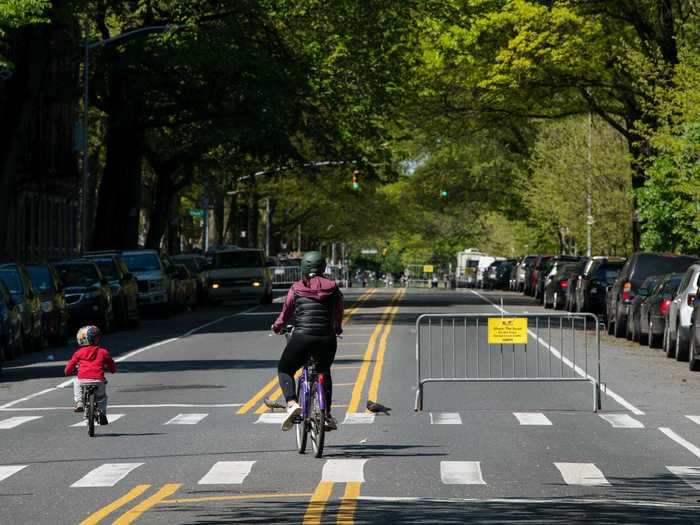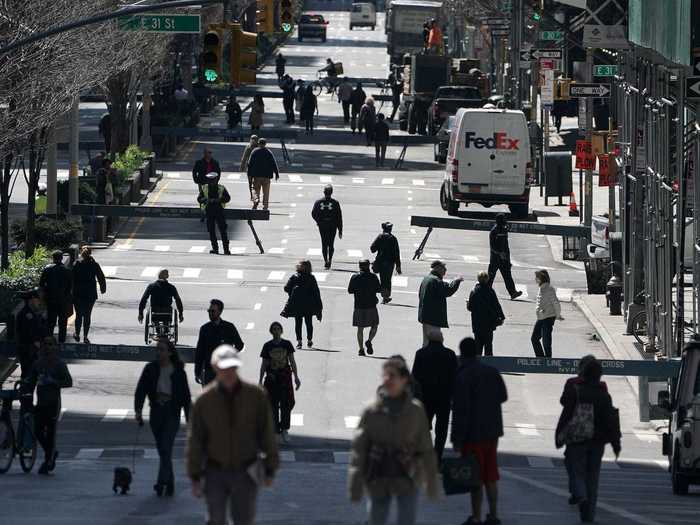People are seen in Park Avenue as part of NYC's "Open Streets," which closes some streets to vehicle traffic to allow more space for pedestrians, as the coronavirus continues to spread across the United States on March 27, 2020 in New York City.Noam Galai/Getty Images
- Cities around the world have closed down public roads to cars in order to make more space for pedestrians to get outside under lockdown.
- From New York City to Bogata, Colombia, here are some creative ways governments have set aside more space to allow for safe exercise and outdoor activity.
- Visit Insider's homepage for more stories.
The coronavirus outbreak has left the majority of the world confined to their homes for months. But people need to get outside.
Cities around the world have implemented new measures to create space for people to walk, bike, jog, rollerblade, and scooter, by closing down public roads to cars.
Some cities have expanded bike lanes and created new access to parks, while others have made a pledge to close down city roads for foot traffic permanently.
These photos reveal the creative ways metropolitan areas have transformed their once traffic-heavy roads into safe spaces for outdoor exercise.
Read the original article on
Insider
In Paris, one of the city's most iconic streets, the "Rue de Rivoli" closed down to cars at the end of April. Though the city began to reopen on May 11, the closure of Rue de Rivoli is set to last through the summer, and may even become permanent.
Cyclists wearing protective face masks ride in a cycle lane in the "Rue de Rivoli"
Stephane Cardinale - Corbis/Corbis via Getty Images
Milan, Italy, has announced one of the most sweeping measures to reallocate streets for pedestrian use in Europe by transforming 22 miles of road into cycling and walking spaces this summer.
A cyclist pedals in a deserted street in downtown Milan, Italy Thursday, March 12, 2020.
Luca Bruno/AP Photo
In Bogotá, Colombia, 47 miles of temporary bike lanes have been opened to reduce crowding on public streets and provide better access for safe exercise.
Men wear face masks as a preventive measure against the spread of the novel coronavirus COVID-19, while riding a bicycle in Bogota, on April 29, 2020.
RAUL ARBOLEDA/AFP via Getty Images
In New Zealand, an initiative dubbed "tactical urbanism," is taking road space from cars and transitioning them to provide more room for bicyclists and pedestrians.
A bunch of cyclists ride through Auckland Domain on May 14, 2020 in Auckland, New Zealand.
Phil Walter/Getty Images
But these initiatives aren't just taking place in the US — multiple cities across the world have done the same thing. In Barcelona, 44 streets have been closed to traffic to allow pedestrians more access to outdoor activity.
Streets closed to vehicle traffic by the City Council so that pedestrians can maintain the safety distance the day before the first phase of deconfinament dictated by the Government of Spain comes into force, in Barcelona on 01st May 2020.
Joan Valls/Urbanandsport /NurPhoto via Getty Images
In Philadelphia, nearly five miles of Martin Luther King Drive have been closed indefinitely for pedestrian use, and advocacy groups have been working to pave the way for more access to public roads.
A United States Postal worker makes a delivery with gloves and a mask in Philadelphia on April 2, 2020.
Associated Press
In Boston, at least three roads have been closed down to traffic for pedestrian use, and later this month, the city says it plans to expand additional sidewalks and driving lanes for people to use during the outbreak.
Pedestrians take advantage of the day's sunny weather to stroll down Day Boulevard in Boston's Dorchester on April 10, 2020. Between Farragut Road and Shore Drive in South Boston, area parkways are being closed to allow more pedestrians in the area
Barry Chin/The Boston Globe via Getty Images
In Denver, four separate street closures have allowed pedestrians more access to outdoor areas and has limited the number of people gathering in city parks.
A man takes a walk around nearly-empty Sloan's Lake Park in Denver, Colorado on Sunday, March 29, 2020.
Hyoung Chang/MediaNews Group/The Denver Post via Getty Images
In Charlotte, a "Shared Streets" program has opened up nearly three miles of running, walking, and exercise space for pedestrians throughout the city.
Courtesy of Charlotte Department of Transportation
In Minnesota, both Minneapolis and St. Paul have made efforts to close down some streets to traffic to allow pedestrians more opportunity to exercise while practicing social distancing.
St. Paul, Minnesota, Phalen Park. Governor shuts down vehicle traffic to reduce congestion in the parks
Michael Siluk/Education Images/Universal Images Group via Getty Images
Oakland, California, announced a "slow streets" initiative, which is setting aside 10% of the city's streets — or 74 miles — for pedestrian and exercise use only.
A man and child ride bicycles on 42nd Street, which was closed to traffic, in Oakland, Calif., Saturday, April 11, 2020. Amid all the shutdowns across the country, Oakland is closing 74 miles (119 kilometers) of streets to vehicles to create more space for people to get outside for safe, socially distanced exercise.
Jeff Chiu/AP Photo
In Seattle, 20 miles of streets have been closed to car traffic, and Mayor Jenny Durkan has announced that they will remain closed even after the lockdowns are lifted in the city.
20 miles of streets in Seattle have been closed to traffic.
City of Seattle
In Washington, D.C., three parkways have been closed to car traffic to allow pedestrians more space to walk, jog, and bike. Additional plans to open up more space in commercial areas may also be underway.
A cyclist rides along Beach Drive on April 13, 2020 in Washington, DC. The District of Columbia city government has closed portions of Beach Drive and two other roads to vehicular traffic so that runners and cyclists can access them unbothered for "essential exercise" during the coronavirus outbreak.
Drew Angerer/Getty Images
Eventually, New York City aims to open a total of 100 miles of streets for free use to pedestrians.
A family bikes down the middle of Parkside Avenue on May 7, 2020 in the Brooklyn borough of New York City. Parkside Avenue was just one of several streets, spanning more than seven miles, that were closed as part of New York City's Open Streets social distancing initiative.
Bryan Thomas/Getty Images
New York City has opened 40 miles of streets to pedestrians throughout each borough. Residents are able to use the streets from 8 a.m. until 8 p.m. daily, unless otherwise stated, and can enjoy them as long as they stay at least 6 feet away from other people.
People walk on Park Avenue, that was closed to vehicular traffic, during the outbreak of coronavirus disease (COVID-19), in the Manhattan borough of New York City, New York, U.S., March 27, 2020.
Carlo Allegri/REUTERS

